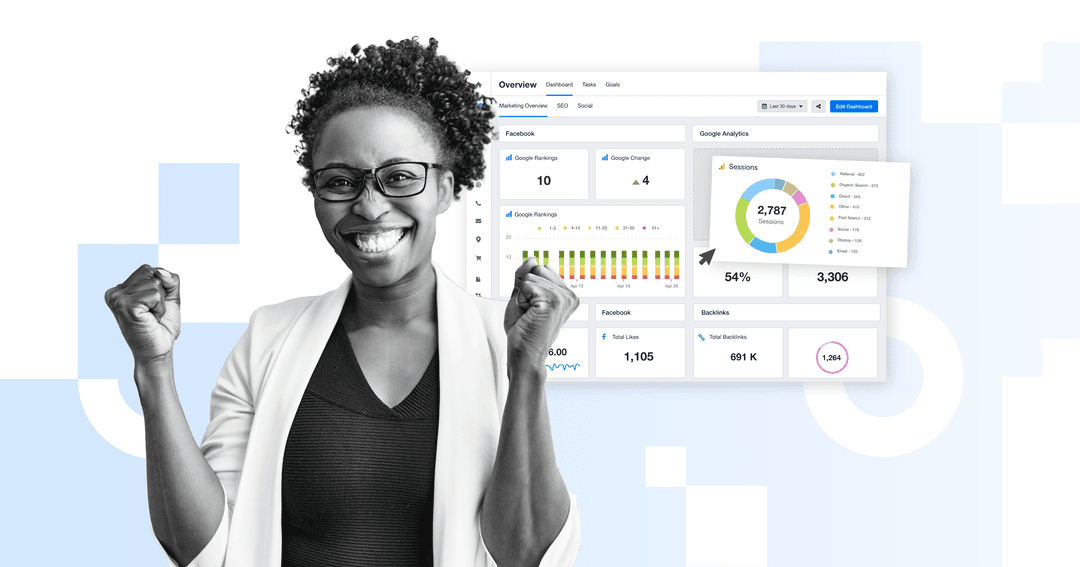Table of Contents
Table of Contents
- What is a Client Proposal?
- Types of Client Proposals
- The Differences Between Solicited and Unsolicited Business Proposals
- How To Write a Business Proposal: 10 Steps for Agencies
- Best Client Proposal Formats To Use When Pitching New Business
- Benefits of Using a Business Proposal Template
- How To Send a Proposal to a Prospective Client
- How To Follow Up On a Client Proposal
- What To Do When a Client Rejects Your Proposal
- Summary and Key Takeaways
7,000+ agencies have ditched manual reports. You can too.
Free 14-Day TrialQUICK SUMMARY:
Crafting a compelling client proposal can feel like walking a tightrope for marketing agencies. There's a delicate balance between showcasing your expertise and delivering a message that motivates potential clients to seal the deal. In this article, we’ll discuss how to write a winning business proposal and share our client proposal template to help you get started and save time.
You know your agency is awesome. Your team is experienced, your strategies are innovative, and you’ve got the perfect plan to execute on an exciting new client opportunity you’ve set sights on.
Knowing all this, it should be easy to create the pitch that will land you the business… So why does writing a client proposal always feel so hard?
There’s your agency history, bios of your team members, the technical knowledge swimming around in your head, competitor benchmarks, and everything else you need to know to get the job done. But not everything can–or should–be included in a client proposal.
A well-constructed, effective, and professional business proposal is a key that unlocks high-value contracts, but the process is often time-consuming and daunting.
In this article, we’ll share how to write compelling business proposals that showcase your marketing expertise and impress potential clients. We’ll even share our proposal template and email samples you can use to get started quickly and save plenty of time.
What is a Client Proposal?
Before we dive into the step-by-step process, let's clarify what a client proposal actually is and why it's a foundational tool for marketing agencies. A client proposal isn’t just a formal document to help with the sales process—it’s a strategic tool that sets the stage for a successful partnership.
A client proposal serves three purposes:
1. Clarity: It defines the scope of work, deliverables, timelines, and costs. This prevents misaligned expectations and establishes a strong foundation for trust by showing the client that your agency is on the same page.
2. Alignment: It ties back every business recommendation to the client’s goals, demonstrating an understanding of their challenges and tailored solutions to address them.
3. Value Demonstration: A great business proposal showcases expertise and emphasizes the impact of the proposed solutions.
When executed thoughtfully, a client proposal becomes more than a pitch—it serves as the agency’s first impression, acts as a roadmap for future collaboration, and demonstrates a commitment to delivering results.
Delivering knowledge and value in the discovery phase shows customers a snapshot of what it is like to work with us and helps them see the potential that exists. This can really set the tone for the whole project and makes the customer comfortable to invest properly.
Nick Butler, Managing Director, Ireland Website Design
Types of Client Proposals
Now let’s talk about what proposals might look like. Marketing agencies create various business proposals based on their clients' specific needs and the services they offer. However, these are some of the most popular business proposal ideas generated by marketing agencies:
1. Full-Service Marketing Proposal
This type of business proposal outlines a complete marketing campaign or strategy for a client, which may include a combination of digital marketing services, traditional marketing services, public relations, social media, and more. It often includes a proposed budget, timeline, tracking metrics, and performance strategy.
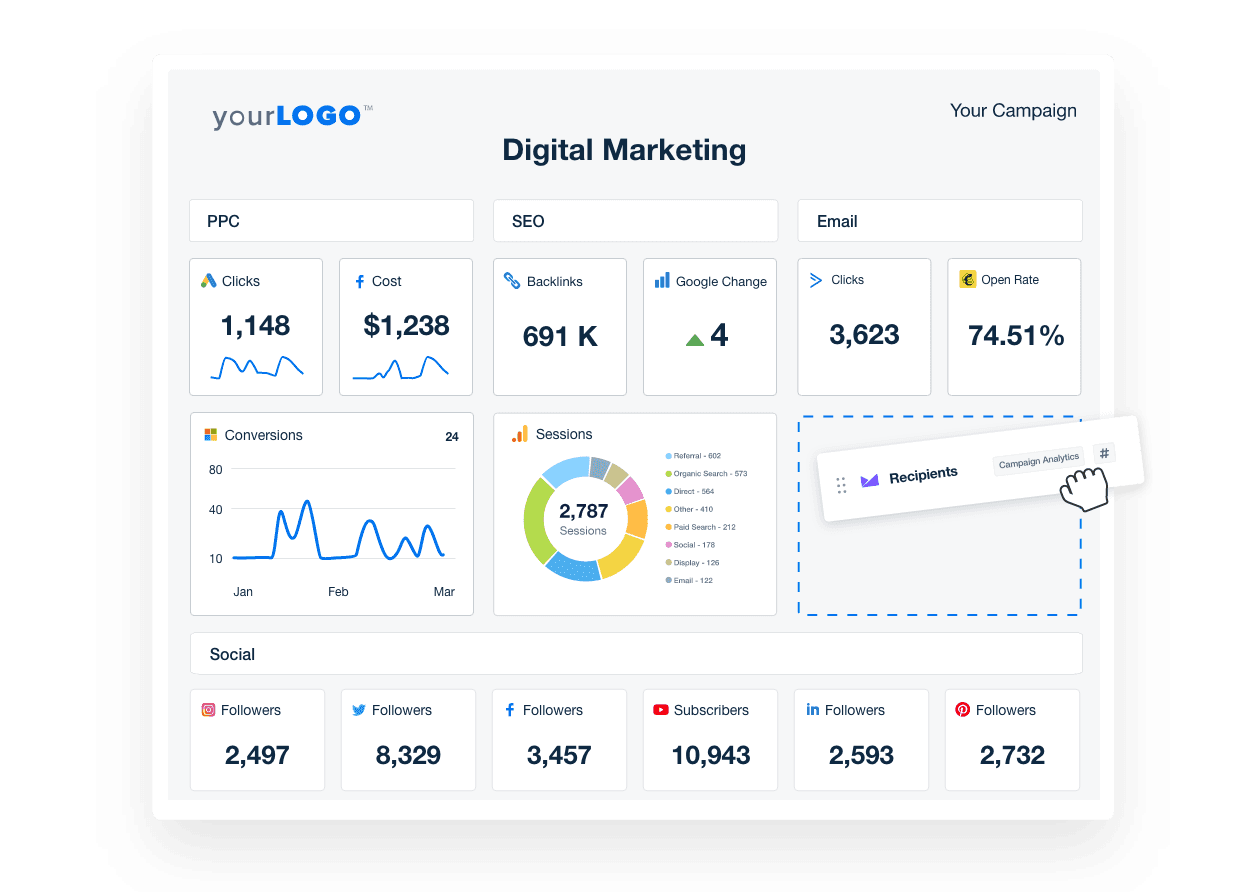
Use the drag-and-drop report builder to create custom digital marketing dashboards that automatically capture and highlight your client's key metrics. Try AgencyAnalytics free for 14 days!
A full-service digital marketing proposal allows an agency to bring all of its expertise to bear. It provides a comprehensive solution that creates a unified and powerful strategy for enhancing a client's online presence and business performance.
2. SEO Proposal
An SEO proposal outlines the steps your agency plans to take to improve a client's search engine rankings. This involves an SEO audit of the current website, keyword research and rank tracking, on-page and off-page optimization strategies, content creation, and more.
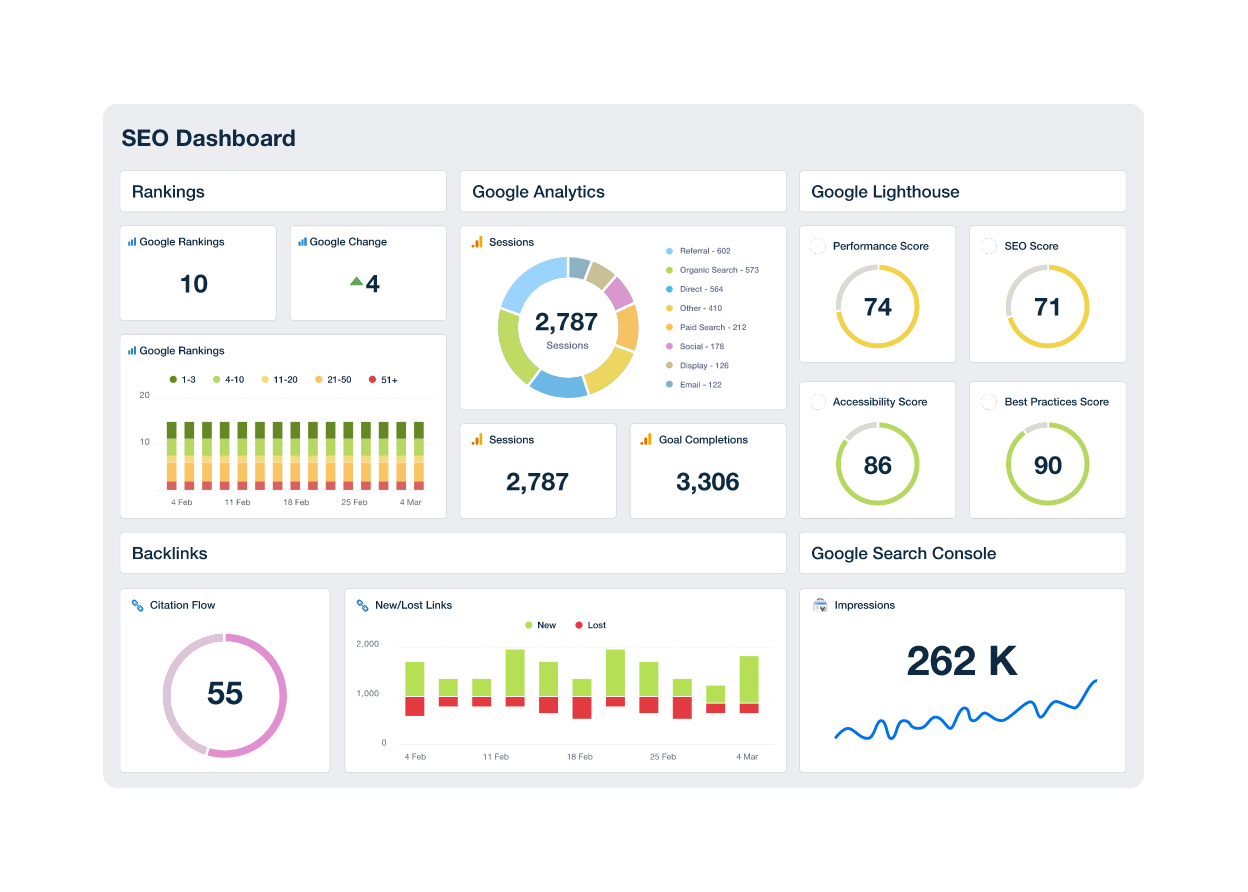
Take control and drive results by unleashing faster, easier client reporting with our white-labeled SEO dashboard. Sign up for your free 14-day trial with AgencyAnalytics!
Leveraging an SEO proposal template streamlines your agency's client proposal process, provides a structured approach that ensures all critical elements are included, and saves time while enhancing the clarity and impact of your business proposals.
Read More: How to Create a Winning SEO Proposal
3. Content Marketing Proposal
This business proposal example is focused on creating and distributing content, such as blog posts, videos, infographics, webinars, eBooks, and more. It often includes a content calendar, an SEO strategy, proposed topics and formats, and a content promotion plan.
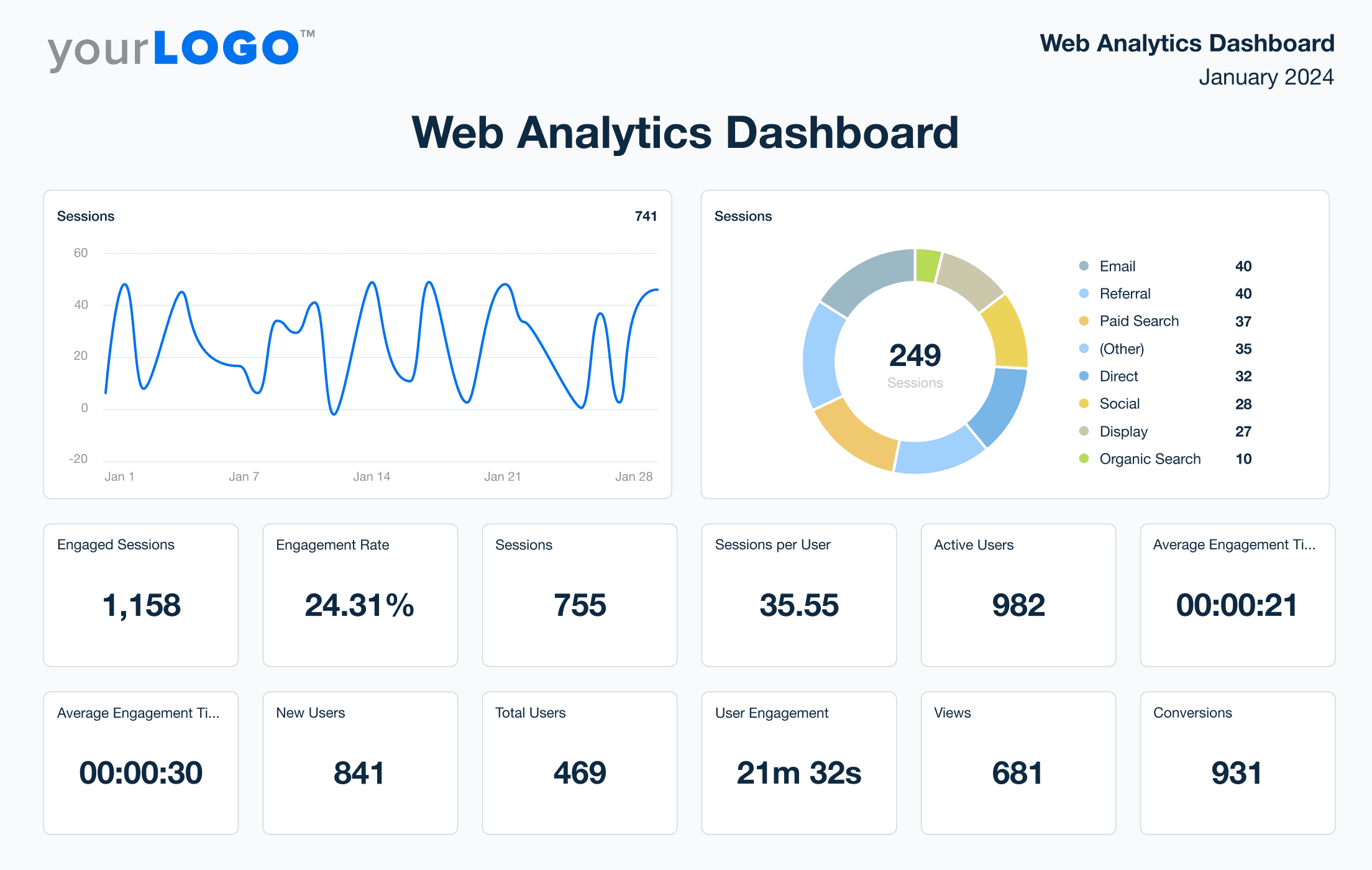
Show off how your content has translated to relevant traffic with a customizable web analytics dashboard. Make one for free with a 14-day AgencyAnalytics trial.
A well-crafted content marketing proposal is a strategic roadmap to increasing a client's website traffic or social media presence, outlining targeted content creation and promotion strategies designed to attract, engage, and retain a larger online audience.
4. Social Media Proposal
These business proposals cover strategies for engaging with audiences on various social media platforms. A social media proposal template often includes an analysis of the current social media presence, recommended platforms to use, content strategy, engagement strategy, a schedule for posts, and a budget for paid social ads.
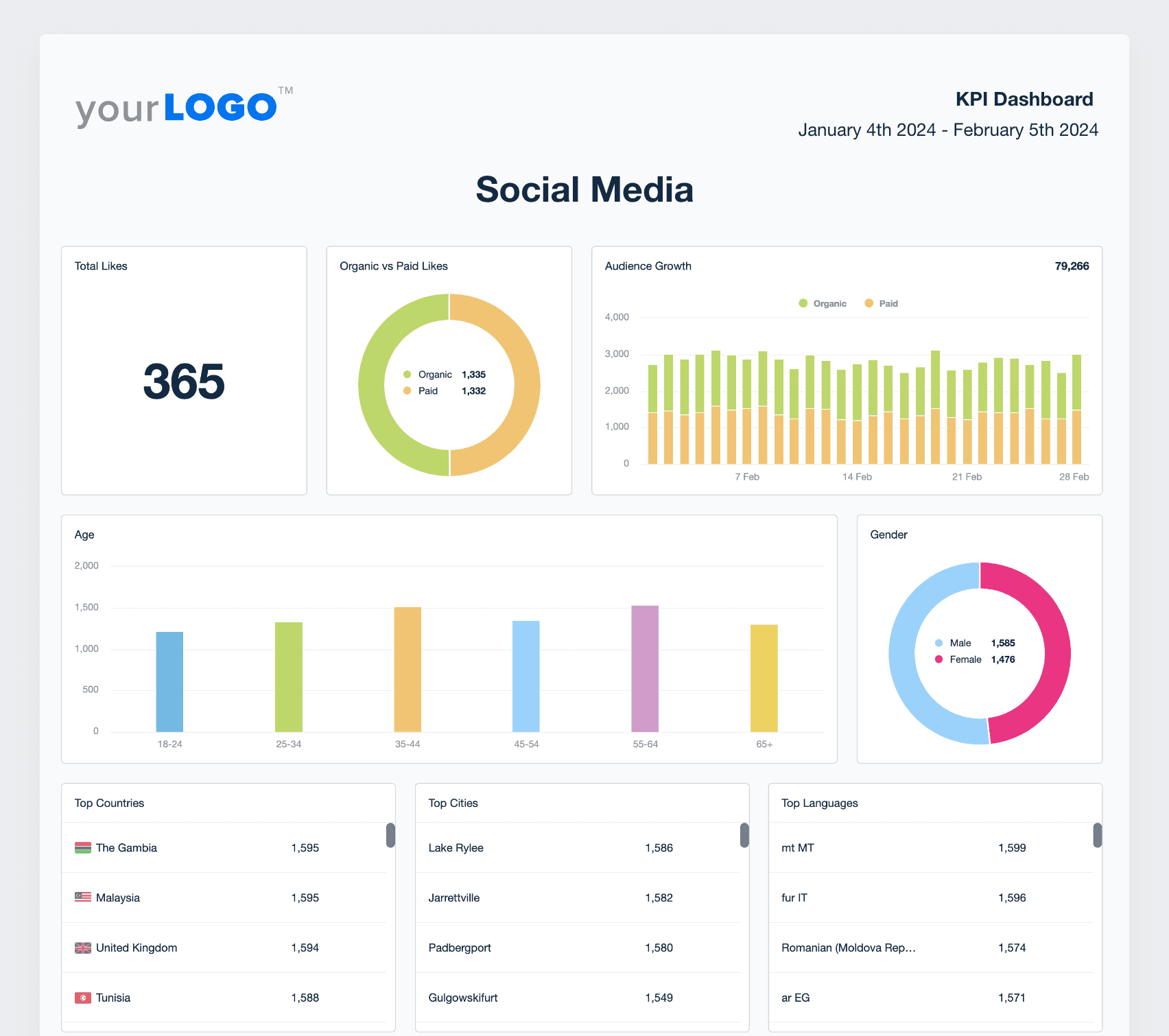
Turn data into decisions with our social media dashboard solution and turbocharge your client reporting. Sign up now to try it free for 14 days!
A compelling social media marketing proposal lays the groundwork for substantial revenue growth for your clients, outlining a targeted strategy to increase brand visibility, engage with potential customers, and drive more traffic to their sales channels.
Read More: How to Write Winning Social Media Proposals
5. Web Design Proposal
A web design proposal outlines the strategy and execution plan for designing or redesigning a client’s website. It typically includes in-depth research on the client’s industry, competitor analysis, and insights into user behavior. Proposals often detail the site’s architecture, user experience strategy, and visual design concepts aligned with the client’s brand identity. Many also include development timelines, cost breakdowns, and plans for ongoing maintenance and optimization.
Strong web design proposals go beyond aesthetics—they emphasize the measurable impact of a well-designed website. This might include recommendations for responsive designs optimized for mobile and tablet devices, SEO best practices to improve visibility on search engines, and integrations with social media or other digital platforms to drive traffic and engagement.

Showcase the value of your agency’s web design services with an ecommerce reporting dashboard that tracks increased traffic, conversion rates, and revenue growth post-launch. Check it out with a free 14-day AgencyAnalytics trial.
A well-executed web design proposal doesn’t just set project expectations—it aligns the website’s design goals with the client’s business objectives, positioning the agency as a strategic partner in driving measurable sales results.
6. PPC Proposal
This proposal addresses strategies for managing pay-per-click advertising campaigns, which include Google Ads, Bing Ads, social media ads, and more. A PPC campaign proposal often contains an audit of any existing PPC campaigns, keyword research, proposed ad copy and creative, a bidding and budget management strategy, and a plan for testing and optimizing the campaign over time.
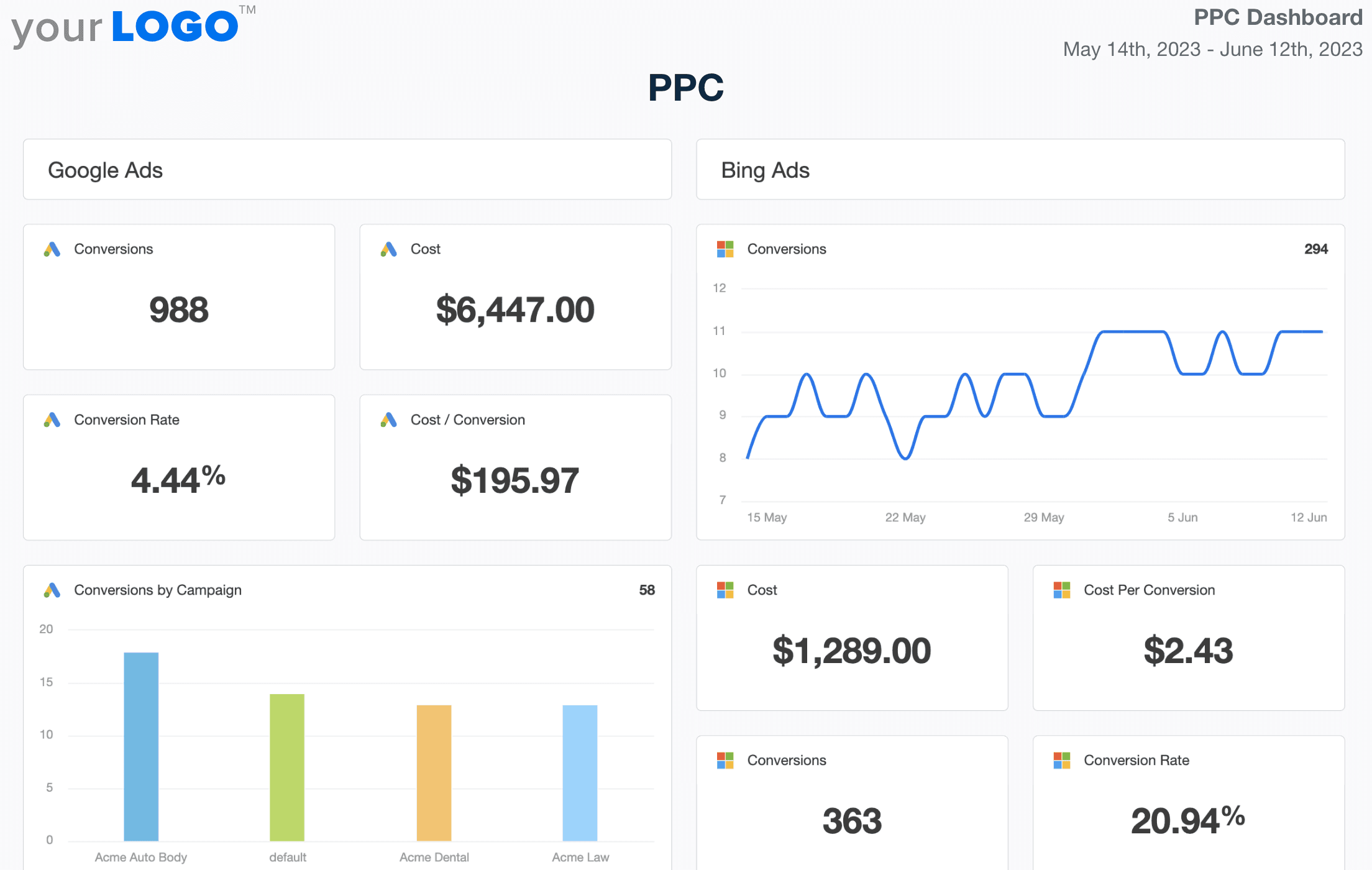
Once you land the new client, create reporting dashboards for them in minutes using a PPC reporting dashboard. Try the customizable PPC dashboard template with a 14-day free trial of AgencyAnalytics.
A PPC management proposal should also outline the agency’s experience with other PPC clients, expected costs, projected return on investment, and the metrics the agency will use to evaluate the campaign's success.
Read More: How To Write a PPC Proposal That Converts
These business proposals aim not only to sell the client on the agency's services but also to provide a clear and detailed plan of action.
The Differences Between Solicited and Unsolicited Business Proposals
Now that we’ve explored common proposal types, it's important to understand the two key approaches to sending them: solicited versus unsolicited proposals.
Formally solicited proposals are requested by potential clients who expect the proposal and have expressed interest in the services offered. These proposals are typically more specific, addressing the particular needs or problems outlined by the client, and often have a higher success rate.
In contrast, unsolicited business proposals are initiated by the service provider without a specific request. Since the client may not be expecting the proposal or identifying a specific need, these proposals tend to be broader in scope, aiming to highlight opportunities the client may not have recognized. However, their success rate can be lower as they may not align with the client's priorities.
Understanding these differences will help you tailor your approach and craft more effective client proposals.
Item | Formally Solicited Proposals | Unsolicited Proposals |
|---|---|---|
Initiation | Requested by the potential client | Initiated by the service provider |
Expectation | The client expects the proposal and has expressed interest | The client may not be expecting the proposal and might not have identified a specific need |
Content | More specific, addressing particular needs or problems the client has outlined | Broader in scope, aiming to convince the client of a need or opportunity they might not have recognized |
Success Rate | Generally higher, since the client has indicated a need or interest | Can be lower, as the proposal might not align with the client's current needs or priorities |
How To Write a Business Proposal: 10 Steps for Agencies
With a clear understanding of proposal types, let's break down the process of crafting a winning client proposal step by step.
Creating a winning proposal requires structure, clarity, and focus. Remember that the entire proposal serves as a platform to communicate your agency’s unique value proposition in a clear and compelling manner.
While templates simplify the process, understanding the core steps ensures every proposal aligns with client needs and delivers value. The following are a few best practices to help you make a strong case for why a prospective client should choose your agency over others.
1. Start with an Engaging Executive Summary
The executive summary or introduction to a client proposal serves as a strategic roadmap, providing a succinct overview of your agency's offering and the potential benefits for the client while also setting the stage for detailed information and solutions to follow. It is meant to spark interest and establish a solid foundation for the rest of the service proposal.
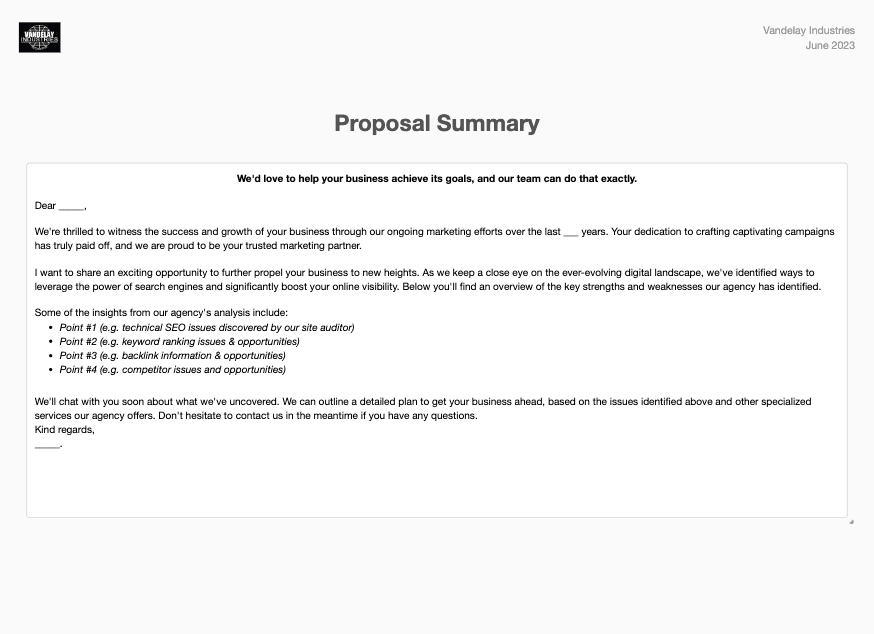
Start strong by tailoring the introduction to address the client’s unique needs. Showcase your agency's expertise with confidence, and directly reference the key pain points uncovered during your research. Make it clear that you understand their challenges and have a focused, results-driven plan to solve them. An engaging introduction not only grabs attention but positions your proposal as the obvious solution to their business goals.
2. Pinpoint the Client's Pain Points
There’s typically only one reason a business leader reads a client proposal—they’re not making as much money as they’d like. Your priority is to figure out why this is, or more likely, one or more of the many reasons behind this shortfall.
Identifying the problem or pain points in a client proposal demonstrates your deep understanding of the client's challenges, helps establish a context for your proposed solutions, and highlights the value your agency can bring by directly addressing these issues and driving tangible business outcomes.
Focusing on business goals right from the beginning helps to hook your reader. If you communicate how you will solve their problems, they’ll continue reading.
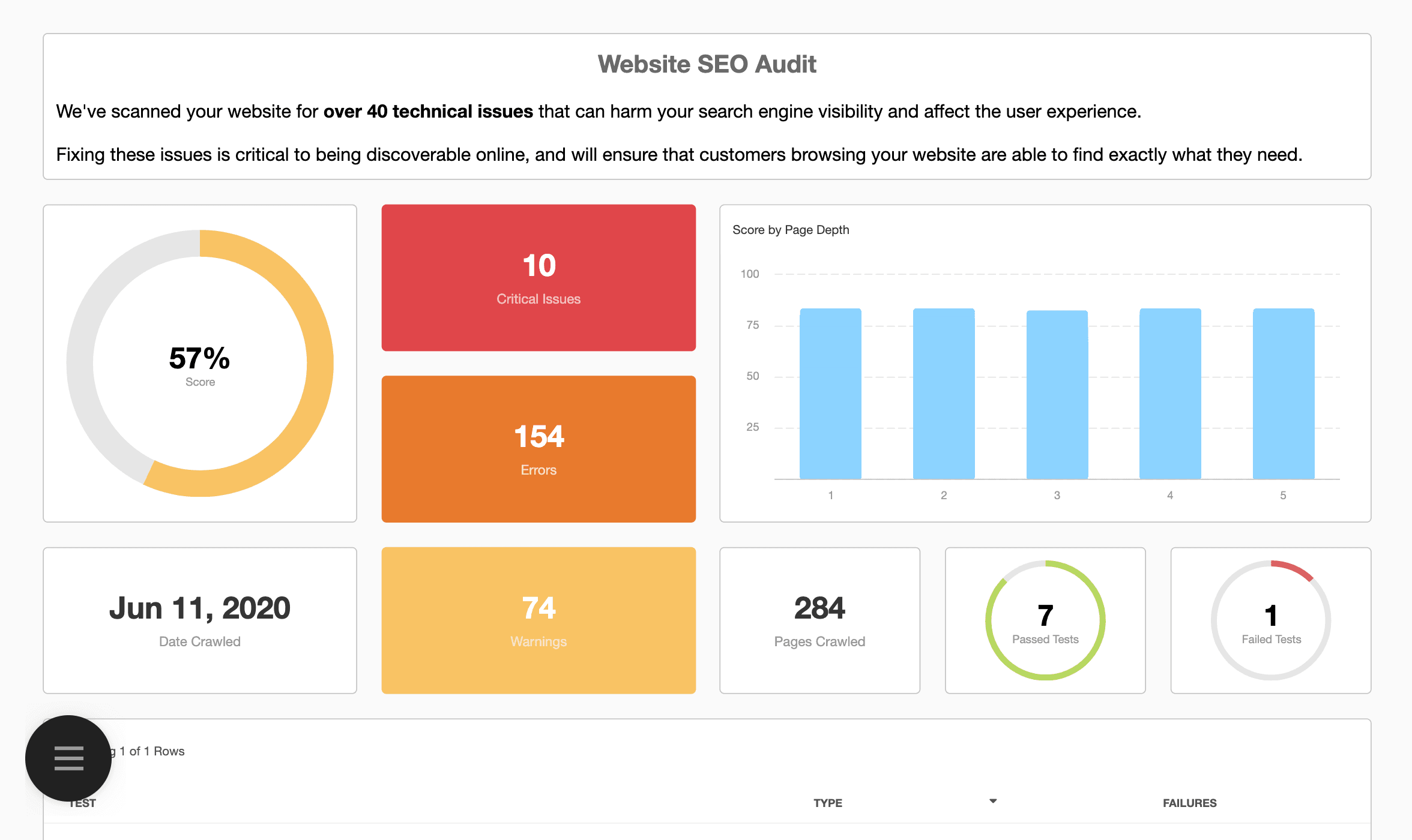
For example, leveraging the findings of an SEO site audit, use the problem or pain point of a low audit score in this section of your proposal to highlight specific areas that need improvement. The client doesn’t need to understand all of the ins and outs of core vitals to see that 57% is not a great score.
Listen to the prospect's needs, wants, and goals. Identify their problem. Listen, listen, listen, and THEN show them your solution.
Jyles Sosa, Fu Dog Media
By illustrating how these issues are impacting the client's online visibility and traffic, you reinforce your agency's expertise in SEO and how you will help the client reach their business goals.
3. Present Your Solution Clearly
Once you’ve established the problem you’d like to solve in the Introduction section of your proposal, it’s time to fill in the details on how you’ll go about this. This is called a project specification. In some ways, this is the most challenging part of your proposal, especially in niches where there might be more than one potential solution.
Depending on the type of client proposal you are creating, this can be attached to each of the individual pain points–such as providing an overview of your team’s ability to address technical SEO errors right below the SEO audit findings or your team’s link-building expertise along with a current overview of the client’s inbound link profile.
Your task here is to convince the reader that your proposed solution is the right one.
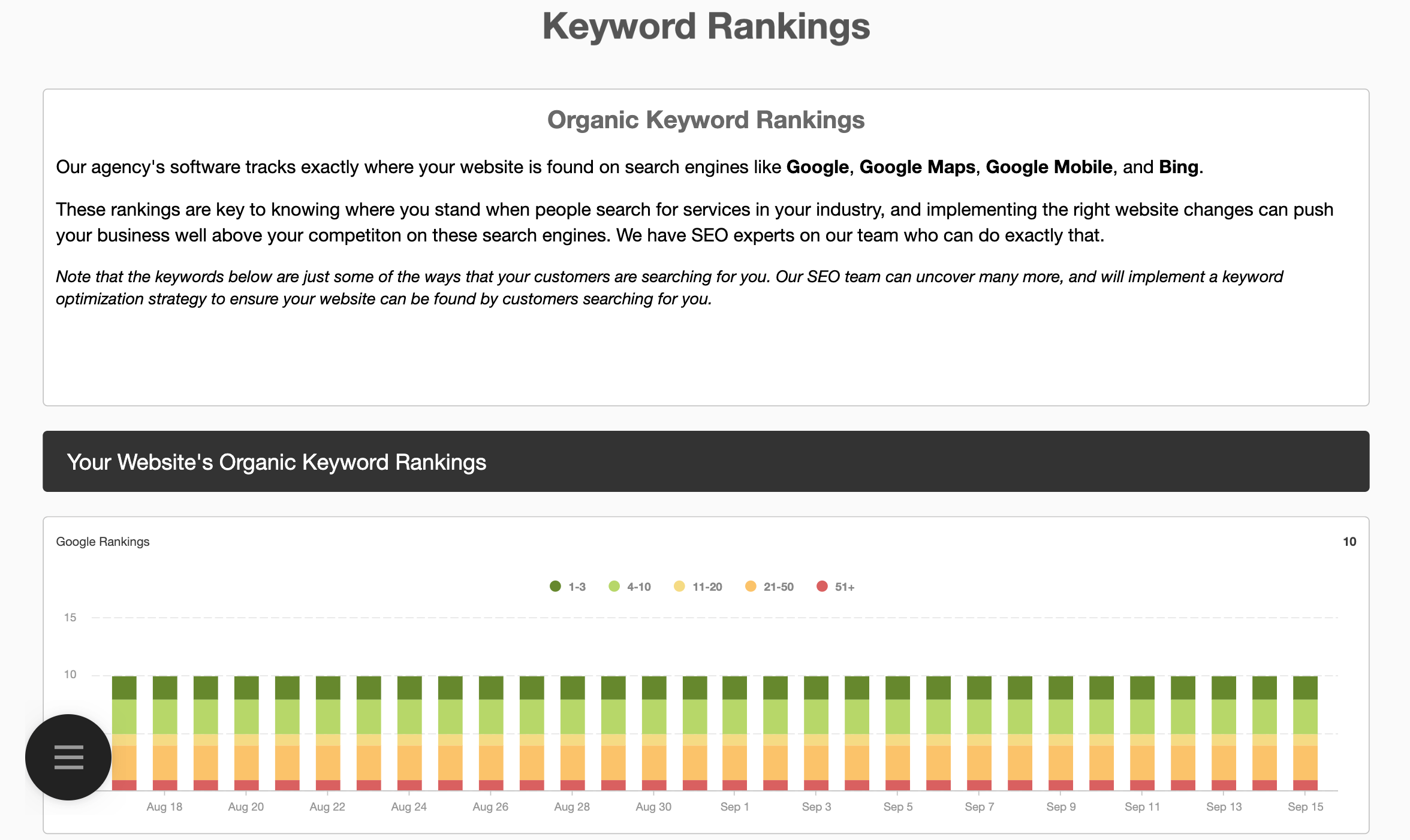
In the example above, the solutions section connects the dots between what the agency provides and how it helps drive results for the client, in this case, increased keyword rankings.
Alternatively, use the summary section and next steps to take a combined approach to how your agency will tackle all of its current problems by tapping into your agency’s expertise.
The balancing act here is to give a detailed overview of what you’ll do, without burying the reader in details.
Make sure the presentation has a clear focus and contains only the most important information. It should have a well-structured narrative that flows logically from one point to the next and strikes an emotional chord with the client. The visuals should be engaging and easy to understand, while any data should be used to back up key points.
Ryan Stack, Co-Founder, The Stack Group
4. Include Pricing Structure (Optional)
When drafting a business proposal, one crucial aspect to consider is whether (or not) to include a clear pricing structure. This can be a strategic decision based on several factors, including the nature of your services, the client's expectations, and your agency's policy.
Including pricing provides transparency and clarity, which many clients appreciate. It gives them a straightforward understanding of the cost of your services, a critical factor in their decision-making process. It also demonstrates your agency's confidence in its value proposition, reinforcing the perceived worth of your services.
However, there can also be a strategic advantage to leaving pricing discussions for a later stage. This approach allows room for negotiation and discussion, which may lead to a more tailored understanding of the client's budget and needs. It also provides an opportunity to further elaborate on the value your agency offers before discussing cost, which can be beneficial in situations where your services' value might be challenging to quantify.
While there is no one-size-fits-all approach, understanding the pros and cons will help you make an informed decision. Here are some points to consider:
| Pros | Cons |
|---|---|---|
Including Pricing | Gives clients a clear understanding of the cost upfront, which may help in their decision-making process | May deter potential clients if they perceive the cost as high without understanding the full value of the service |
Excluding Pricing | Allows room for negotiation and discussion, which may lead to a better understanding of the client's budget and needs | May cause uncertainty or confusion for clients who prefer clear pricing structures upfront |
5. Confidently Demonstrate the ROI of Your Services
Once pricing is addressed, the next critical step is showcasing the measurable value your services bring to justify that investment.
How do you convince the company you are pitching that you are the right agency for the job? The easiest way is to focus on ROI. This means leading with the value your service will provide and then presenting the investment required.
This takes advantage of a piece of psychology called an anchoring bias. Basically, this means that we naturally pay more attention to the information that we hear first.
In other words, position your marketing agency's fees as an “investment” rather than a “budget” or “cost.” Investment evokes the thought that money will be positively returned and be beneficial for your client’s business.
This also highlights the long-term value and return on investment that the client will see down the road. Similarly, it promotes the perception of strategic partnership rather than mere transactional exchange.
If your reader sees a large number representing the money they’ll gain, followed by a smaller number representing what they’ll have to pay, they’re hard-wired to think this is a great deal. Humans are amazing, right?
It’s also a good practice here to offer some kind of guarantee. That is, if you don’t meet a certain project threshold, then your client doesn’t pay. Of course, this takes a certain amount of confidence on your part. However, it also communicates massive extra soft value to your prospects.
We focus on values and ROI projections, so the client can see beforehand how we can benefit their business.
Anatoly Zadorozhnyy, CEO of Marketing 1on1
6. Propose Evaluation Metrics & Your Reporting Processes
When presenting a client proposal, outlining clear evaluation metrics and reporting processes is a critical element that should not be overlooked. These components give potential clients insight into how your agency measures success and maintains transparency throughout the project.
Business owners want a way to measure their progress with our services–showing them upfront that we have a professional mechanism of tracking metrics and that they can log into 24/7/365 puts their minds at ease, and then they can focus on the benefits we can provide their company.
William Smith, Founder, Local Search Technologies LLC
Evaluation metrics are the defined parameters that you will use to assess the effectiveness of your proposed services. These might include things like website traffic, conversion rates, social media engagement, or any other metric relevant to the client's goals.
By detailing these metrics in your proposal, you are setting clear expectations of what success looks like and providing a tangible way to measure the value your agency provides.
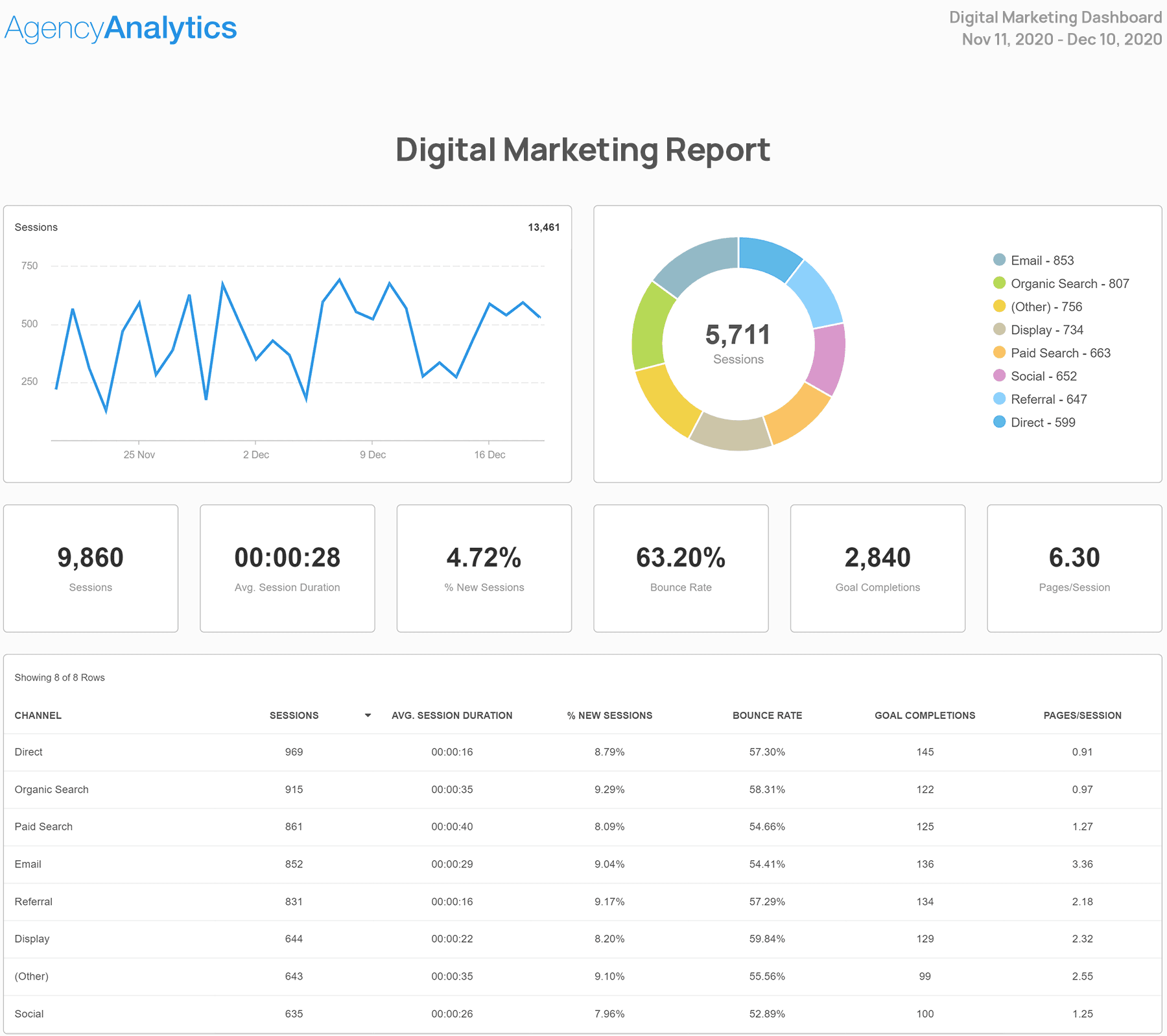
Use examples of your client reporting, like the digital marketing report template shown above, to show off your agency’s reporting capabilities. Try this template yourself with a 14-day free trial!
A well-defined reporting process reassures clients that they will be kept in the loop, reinforcing your agency's commitment to transparency and collaboration. This might include things like monthly reports, a regular check-in phone call, or access to a live reporting dashboard where they can see real-time updates.
One element of our sales pitch deck is a preview of the AgencyAnalytics dashboard. Based on the data we can obtain for the client, we showcase an example of their site audit, Google tools, and top 10 ranking keywords uploaded into the rank tracker, and we include a link to access the report.
Ryan Stack, Co-Founder, The Stack Group
7. Incorporate Case Studies or Testimonials
A strong client proposal doesn’t just outline a strategy—it proves your agency’s ability to deliver results. Case studies, testimonials, and performance metrics provide concrete evidence of your expertise and track record.
Clients are so inundated with calls and emails from our industry it's hard for our clients to know who they can trust. We are working hard on building authority through video testimonials, case studies, content, and guest appearances on podcasts.
Lane Rizzardini, Co-Owner, Marion Relationship Marketing
Use relevant success stories that align with the client’s industry or specific challenges. Highlight key achievements, measurable outcomes, and client endorsements that demonstrate your ability to solve similar problems effectively. Weave these examples throughout your proposal to reinforce credibility and illustrate how your solutions drive results.
Every section, from the executive summary to the detailed solutions, should reflect your agency’s expertise. Whether the focus is SEO, PPC, or social media management, these real-world examples build trust and position your agency as a reliable partner.
When used strategically, case studies and testimonials transform promises into proof, making your proposal not just persuasive, but undeniable.
If you’re an SEO agency, I HIGHLY recommend AgencyAnalytics. It contains the best reporting tool out there... by a mile.


8. Differentiate Your Agency
Standing out in a crowded market is one of the biggest challenges for marketing agencies. Clients are often faced with a sea of similar-looking services, ranging from budget freelancers to larger firms, and it can be difficult for them to identify which partner will truly deliver results.
Empty promises won’t set your agency apart—but proven outcomes will. Highlight measurable achievements, client success stories, and long-term partnerships to build trust. Showcase not only growth metrics but also client retention rates, as these speak volumes about your agency's consistency and reliability.
To address this, we just share our successes as much as we can---not only in terms of growth and expansion, which is a good indication of quality, but also in telling the stories of client retention. We proudly tell everyone about how long our clients stay with us.
Lane Anderson, Founder & CEO, London Road Marketing
Incorporate competitive analysis to further differentiate your proposal. Show the client what their competitors are doing effectively—and where opportunities exist to outshine them. Provide insights backed by research and position your agency as the key to bridging those gaps.
Research the customer's needs, requirements, and expectations. Show them the competition and what they are up against.
Andrew Thomas, Technical Director, HookedOnMedia
Keep the focus on outcomes, not just processes. Whether it’s increased website traffic, higher conversion rates, or improved customer engagement, let the results do the talking. Clients may not always understand the technical details, but they’ll recognize—and value—tangible success.
9. End On Clear Next Steps
The Next Steps and Call to Action (CTA) sections of a client proposal aren't just the closing remarks–they're your agency's powerful one-two punch, designed to create a clear path forward.
Close with a roadmap for moving forward, including a project timeline, responsibilities, and deliverables. Make the next steps actionable and friction-free, with a persuasive call to action that invites the client to sign, schedule a call, or approve the proposal.
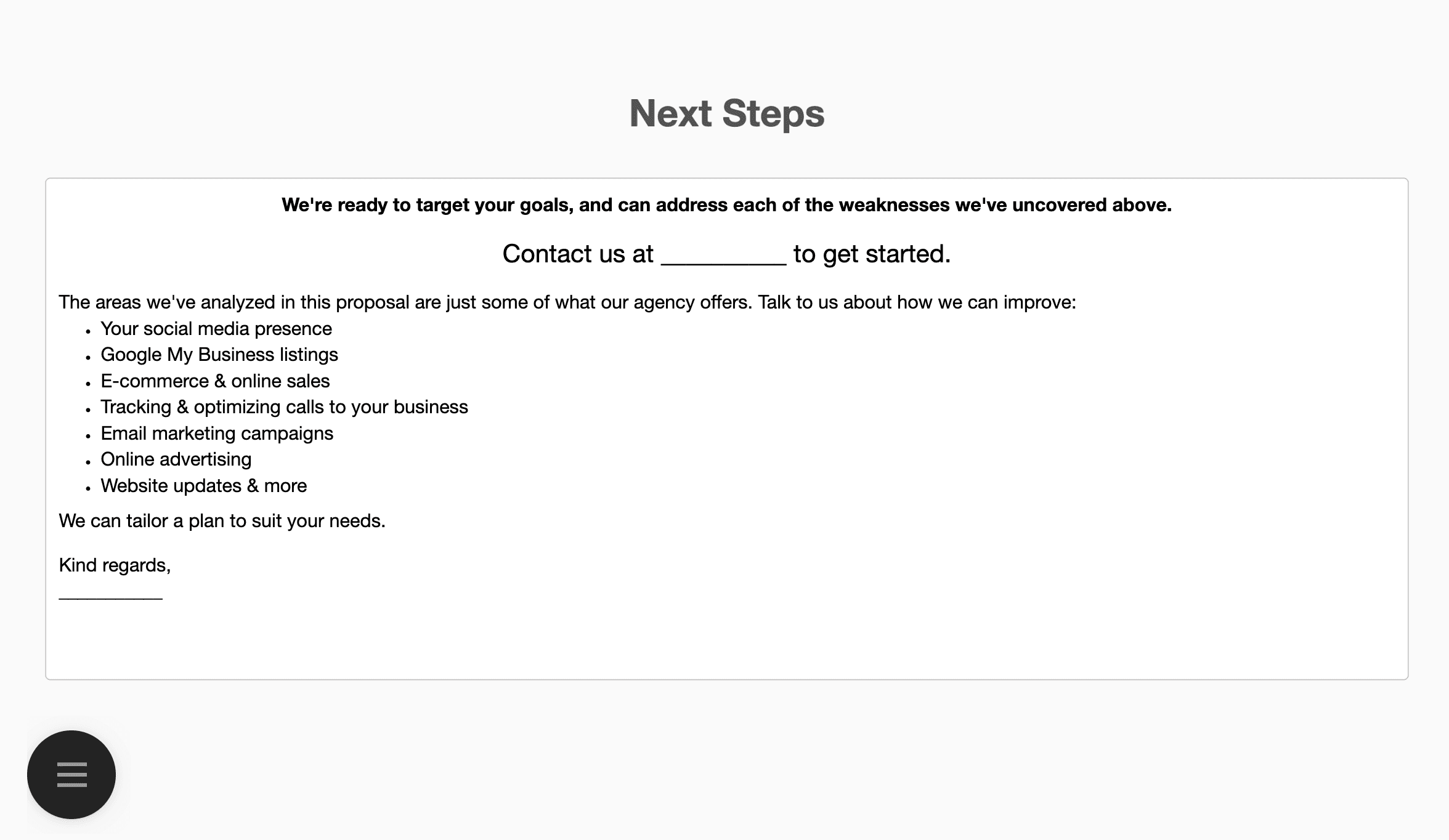
Another easy way to project value without getting into technical details is to offer detailed timescales. This is often overlooked, but it offers a number of benefits.
When we lay out the tasks that we'll be completing, the timeline, contingent elements, and the details we'll depend on the client to provide, they leave with the assurance that we have a plan.
William Wilkinson, Founder, Interactive ID
Timescales educate your leads about what you’ll need from them and when, including a detailed project timeline or project phases. In turn, this creates credibility and offers them project details that they actually care about.
By clearly outlining what comes next and offering a persuasive CTA, you're not just suggesting the next move; you're choreographing the dance of conversion, turning prospects into clients and proposals into exciting projects.
10. Make Sign-Off Easy
Simplifying the project sign-off process isn’t just about convenience—it’s about removing barriers to a smooth client experience. Gone are the days of paper proposals and in-person signatures. Today, seamless onboarding often starts with tools like proposal management software, which offer features such as electronic signatures, integrated payment platforms, and real-time tracking. Tools like Better Proposals also allow you to track the status of your proposal—you’ll know exactly when your proposal has been opened, signed, or paid online, and how much time your potential client spent on each section of your proposal.
Best Client Proposal Formats To Use When Pitching New Business
Beyond simplifying the sign-off process, the format you choose for your proposal significantly impacts how it’s received and understood:
PDF Proposals: Ideal for final versions, PDFs preserve formatting, prevent unwanted edits, and are universally accessible across devices.
Presentation Slides (PowerPoint or Google Slides): Best for live presentations or highly visual proposals. These formats allow you to walk the client through your ideas in an engaging way.
Collaborative Docs (Microsoft Word or Google Docs): Useful for draft proposals or collaborative edits, allowing flexibility and real-time feedback.
Online Proposal Management Software: Platforms like AgencyAnalytics enable interactive web-based proposals with embedded videos, dynamic content, and live tracking analytics.
Whichever format you choose, ensure it effectively communicates your message, aligns with your branding, caters to the technical capabilities and preferences of your prospective clients, and includes all of the insights you have gleaned during the research and client discovery processes.

An example of the Digital Marketing Proposal template used by Click Control Marketing. Read their AgencyAnalytics case study.
Benefits of Using a Business Proposal Template
As you’ve seen above, writing an effective business proposal takes work. But there's no need (or time in your busy day) to recreate the wheel whenever you need to create a new proposal.
Here are some key benefits of enhancing your proposal development process by using free business proposal templates, like the ones included in the AgencyAnalytics platform:
Time Efficiency: Business proposal templates save valuable time by providing a ready-made structure and framework. Instead of starting from scratch each time, focus that time on customizing the content to suit your specific client and project requirements. Templates also streamline the formatting and organization of information, ensuring a cohesive and professional-looking proposal.
Consistency and Branding: Using a business or service proposal template maintains consistency across client proposals, reinforcing your agency's brand identity. You present a unified and polished image to potential clients by incorporating your logo, colors, and typography. Consistency not only enhances brand recognition but also instills trust and professionalism.
Clarity and Structure: Client proposal templates offer a clear and logical structure that guides you, and your team, through the client proposal creation process. They provide predefined sections for critical elements such as executive summaries, problem statements, proposed solution, timelines, and next steps. This structure helps you organize your thoughts and ensures that important information is included, making it easier for non-experts to follow and understand your proposal.
Value Demonstration: A well-crafted proposal template effectively communicates the value of your agency’s services to non-experts. Use it to showcase your expertise, highlight past successes, and outline the specific benefits of your solutions. By presenting a comprehensive yet concise proposal, you quickly articulate the value you bring and demonstrate your understanding of the client's needs.
Professional Presentation: Templates provide a professional foundation for client proposals, ensuring a visually appealing and polished presentation. They offer standardized formatting, font styles, and headings, making your proposal aesthetically pleasing and easy to read. A professional-looking proposal creates a positive first impression and reflects your agency's professionalism and attention to detail.

Take the guesswork out of proposal writing with our client proposal template. It’s designed to guide agencies through each step, saving time while ensuring clarity and professionalism in every proposal. Try it free for 14 days!
How To Send a Proposal to a Prospective Client
Now that you have everything you need to create a flawless client proposal, the last step is to get it into the hands of your future client.
To aid in this endeavor, we have crafted a sample business proposal template email for sending your proposal electronically. Feel free to edit it to your heart’s content.
Client Proposal Email Template
Subject: [Your Agency Name] Proposal for [Client's Business Name] - Unlocking Your Digital Potential
Dear [Client's First Name],
We trust you've been navigating these dynamic market conditions with the resilience we've come to associate with [Client's Business Name]. As we've recently discussed, these times present not just challenges but opportunities for growth and innovation.
At [Your Agency Name], we have been closely studying your current digital landscape and identifying areas where we believe our expertise can make a significant impact. It's with this understanding and a vision for future growth that we present our proposal for your consideration.
Attached to this email, you will find a comprehensive proposal outlining how our services can align with your business goals. It details our suggested strategies for SEO, content marketing, social media engagement, and more - all tailored to [Client's Business Name]'s unique needs.
We've also included case studies that demonstrate our proven track record in driving success for businesses similar to yours. Additionally, you'll find clear steps on how we can move forward together.
We invite you to review this proposal at your earliest convenience. Should you have any questions, need clarification, or wish to discuss any aspect of the proposal, please don't hesitate to reach out. We are committed to making this a collaborative and insightful process.
We look forward to the possibility of partnering with you to unlock the digital potential of [Client's Business Name] and setting new benchmarks of success.
Best,
[Your Name]
[Your Position, Company's Name]
[Your Contact Information]
How To Follow Up On a Client Proposal
Once your proposal is in the client's hands, thoughtful follow-up becomes essential to moving the process forward.
A well-crafted project proposal is only half the battle—the follow-up is where deals are often won or lost. Rarely does a client say “yes” on the first try, no matter how polished your proposal may be. Consistent, thoughtful follow-up ensures your proposal stays top of mind, addresses lingering questions, and demonstrates your commitment to the partnership. As the saying goes, “the fortune is in the follow-up.”
Just in case the client doesn’t respond immediately and start throwing money at your agency, here’s a drafted follow up email to remind them why your agency is their best choice.
Client Proposal Follow-Up Email Template
Dear [Client's First Name],
I trust your week is progressing smoothly and that you've been able to review the proposal we shared recently. At [Your Agency Name], we understand that you have a busy schedule and that this decision requires careful consideration.
Our proposal, as you may have noted, is crafted with a focus on [Client's Business Name]'s unique digital needs and goals. We are confident that our strategic approach will help pave the way for amplified visibility, increased website traffic, heightened customer engagement, and–ultimately–more revenue.
If there are any aspects of the proposal you would like to discuss in more detail, or if you have any questions, please feel free to let us know. We are more than happy to schedule a call or a meeting at a time that suits you best. Our priority is to ensure that you have all the information needed to make the most informed decision.
We're excited about the possibility of this partnership and eager to start making strides toward achieving your digital growth objectives.
Looking forward to hearing from you soon.
Best,
[Your Name]
[Your Position, Company's Name]
[Your Contact Information]
Agency Tip: Instead of simply emailing the proposal and waiting for a response, schedule a call to walk the client through it in real-time. This approach allows you to clarify key points, address immediate questions, and gauge the client’s reactions. Walking them through the proposal creates engagement, reduces misinterpretations, and increases the likelihood of a quicker decision.
What To Do When a Client Rejects Your Proposal
Despite your best follow-up efforts, sometimes a client will still decline your proposal. Here’s how to turn a rejection into an opportunity.
Rejection is never easy, but it doesn’t have to be the end of the conversation. When a client rejects your proposal, it usually means there’s an unresolved concern that email alone can’t address. Instead of walking away, view this as an opportunity to learn, adapt, and potentially salvage the deal.
1. Ask for Honest Feedback: Politely ask the client for clarity on their decision. Questions like, “Was there something specific in the proposal that didn’t align with your expectations?” can uncover valuable insights. Understanding their hesitation helps you refine your approach for future proposals—or even address their concern directly.
2. Suggest a Follow-Up Call: Offer to schedule a short call to discuss their concerns further. Many objections stem from misaligned expectations, unclear deliverables, or budget worries—issues that can often be resolved through a conversation. A live discussion allows you to address these hesitations in real-time and demonstrate your commitment to finding a solution.
3. Keep the Door Open: Not every “no” is permanent. End the interaction on a positive note by letting them know you’re available if their situation or needs change. A gracious exit leaves a lasting impression and keeps the relationship intact for future opportunities.
Client rejection doesn’t always mean the end of the road. With a professional response and a willingness to address concerns directly, agencies can often turn a “no” into a “not yet”—and eventually, a “yes.”
Summary and Key Takeaways
Writing an effective client proposal is a delicate balance of demonstrating expertise, understanding the client's needs, and articulating the unique value that your agency brings to their business. It's an opportunity to not just sell your services, but to build a partnership founded on trust, expertise, and a shared vision for the client's success.
Whether your proposal was accepted immediately, required follow-up, or faced initial rejection, using a solid template ensures you start with a strong foundation every time, by:
Streamlining your proposal creation process,
Communicating your agency's value effectively, and
Creating reader-friendly proposals that resonate with every prospective client.
Ready to start creating winning proposals? Use the AgencyAnalytics client proposal template to save time and close more deals.

Written by
Paul Stainton is a digital marketing leader with extensive experience creating brand value through digital transformation, eCommerce strategies, brand strategy, and go-to-market execution.
Read more posts by Paul StaintonSee how 7,100+ marketing agencies help clients win
Free 14-day trial. No credit card required.


